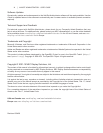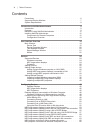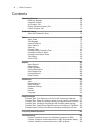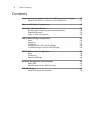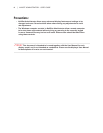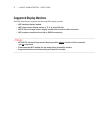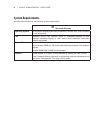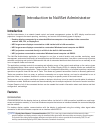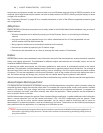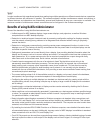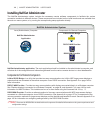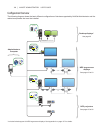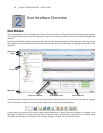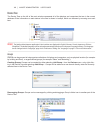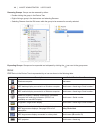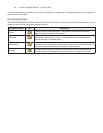
10 | NAVISET ADMINISTRATOR 2 USER’S GUIDE
Large-screen and projector models can communicate via a host Windows computer using an RS232 connection to the
computer. Most large-screen display models can also be daisy-chained via RS232, allowing multiple displays to share
a single LAN connection.
See “Conguring Devices” on page 45 for a complete description of each of the different supported connection types
and congurations.
Adding Devices
Display devices and Windows computers can be easily added to the NaViSet Administrator database using a variety of
different methods.
• Windows computers can be added by querying an Active Directory Server, or enumerating the Windows
network.
• Any type of device can be imported from a list in either a delimited text le, or Excel spreadsheet, as well
as from another NaViSet Administrator le.
• Many projector models can be automatically detected on the network.
• Devices can be added by specifying an IP address range.
• Devices can also be added one at a time by entering their host names or IP addresses
Database
NaViSet Administrator uses a database to store information about all of the remote devices, access credentials, operation
history, and logging information. The databases for different projects and networks can be loaded, saved, and can be
transferred between different computers.
As devices are added and queried, the information gathered for each device is automatically stored in the internal
database. The application includes database query functionality to generate reports about the devices. For example at
the most basic level it can be used for asset tracking, such as compiling a list of the model names and serial numbers
of displays. This can be expanded to include more information, such as the number of hours each display has been in
use, the carbon savings and energy cost, and even the non-volatile Asset Tag string stored in each device.
Reports can be exported to Excel or delimited text les to facilitate the easy transfer of data for use with other applications.
Advanced Computer Monitoring and Control
For displays that are connected to a Windows computer, NaViSet Administrator can gather useful information about the
computer and even control the computer power state. For example the computer make, model, serial number, available
memory, OS version, CPU type, usage, and many more parameters can be collected and reported. A computer can
even be restarted, shut down, and woken remotely from within the application. These operations can be scheduled to
occur at specic times or intervals.
NaViSet Administrator supports the popular Open Hardware Monitor application, to gather additional useful information
about a remote computer such as the internal main-board, CPU, and GPU temperatures and fan speeds. These
parameters, just like any other monitor related parameter, can be used to create a conditional alert to inform an
administrator of an abnormal situation, such as overheating or fan failure. These alerts can be notied by displaying an
alert condition within the application, or by sending out a notication e-mail.
!Note: Remote display and computer devices do not broadcast events back to the NaViSet Administrator application. All
information is acquired by polling the device. Therefore alert conditions are discovered by periodically polling devices to
query their condition.



